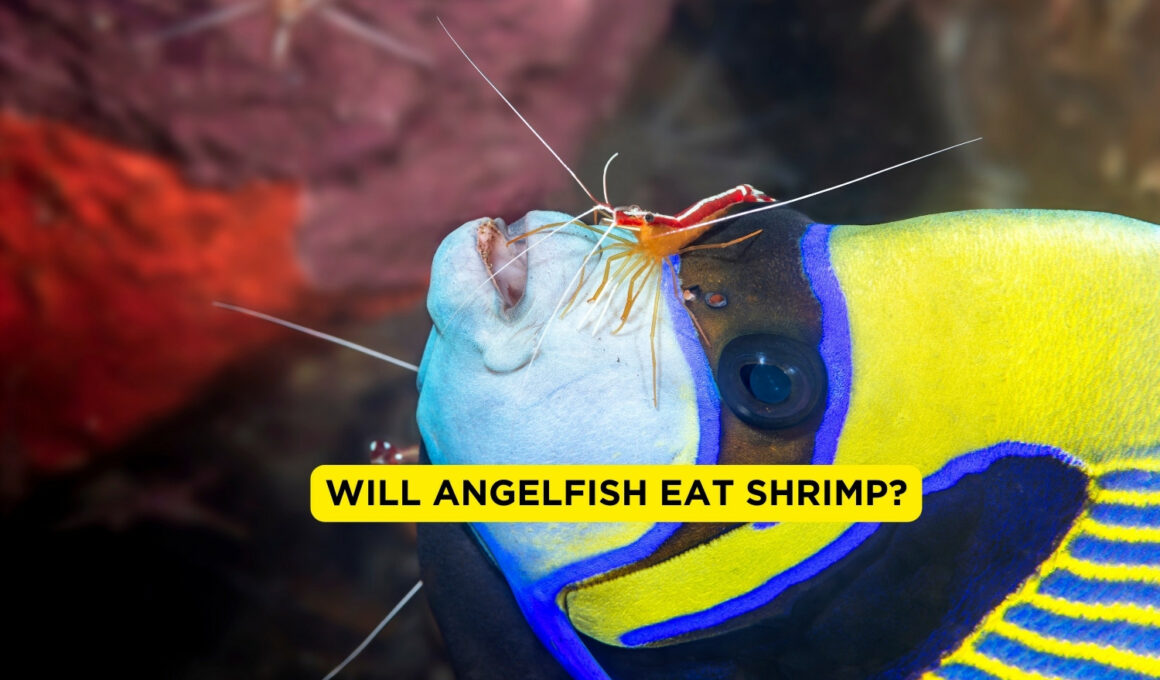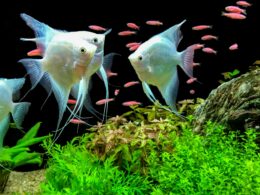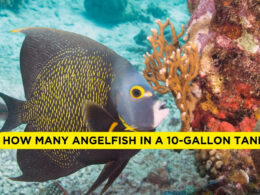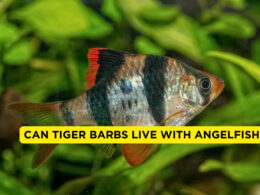In this article Show
If you’re setting up a home aquarium or already nurturing one, you might wonder about the compatibility of different species, particularly when it comes to angelfish and shrimp.
As an experienced fishkeeper, I’ve seen my fair share of interactions within the aquatic environment. This post will specifically address the question: “Will angelfish eat shrimp?”
It’s crucial for aquarium enthusiasts to understand the nature of angelfish and their dietary habits, especially if you’re considering introducing shrimp into your tank.
Here, we’ll explore this topic in a straightforward yet comprehensive manner, ensuring you have all the information needed to make informed decisions for your aquatic pets. Let’s get into the details without any unnecessary complexities.
Will Angelfish Eat Shrimp?
Yes, angelfish can eat shrimp. In-home aquariums, it’s not uncommon for angelfish, known for their opportunistic feeding habits, to consume smaller shrimp. This behavior is influenced by factors such as the size and species of both angelfish and shrimp, as well as the conditions within the tank. For those considering adding shrimp to an angelfish tank, it’s important to understand this dynamic to ensure a harmonious environment.
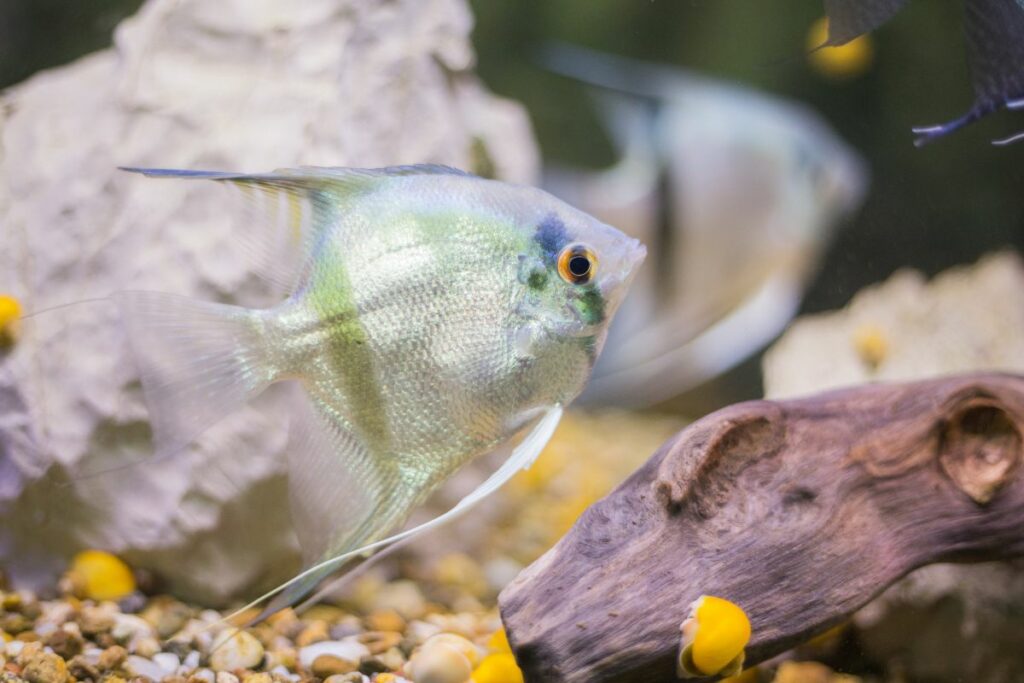
Angelfish and Shrimp Interaction
When it comes to angelfish sharing a space with shrimp in your aquarium, their interaction is largely dependent on size and species. Generally, larger angelfish may see small shrimp as food due to their natural predatory instincts.
On the other hand, larger or more agile shrimp species might coexist more peacefully with angelfish. It’s also about the environment – a well-planted tank with plenty of hiding spots can help shrimp evade angelfish.
However, it’s crucial to observe their behavior closely. Some angelfish might ignore shrimp altogether, while others may be more inclined to chase or nip at them.
Therefore, when introducing shrimp to an angelfish tank, it’s always good to start with caution, monitor their interactions, and be prepared to make adjustments for the well-being of all your aquatic pets.
Factors Influencing Angelfish to Eat Shrimp
Several key factors can determine whether your angelfish might eat the shrimp in your tank. First, the size of the tank plays a significant role. In a larger aquarium, shrimp have more space to hide and can easily escape the attention of angelfish. Conversely, in smaller tanks, shrimp are more vulnerable due to limited hiding spots.
The number of fish in the tank is also crucial. A crowded tank can lead to stressed fish, which might result in angelfish becoming more aggressive or territorial, thereby increasing the risk to shrimp.
Additionally, the type of shrimp you choose is important. Smaller, slower-moving shrimp are more likely to be eaten by angelfish. In contrast, larger or quicker shrimp, like Amano or Bamboo shrimp, are often better at avoiding angelfish.
Ultimately, these factors – tank size, population density, and shrimp species – significantly influence the likelihood of angelfish preying on shrimp in a home aquarium. Careful consideration and monitoring of these aspects can help in creating a harmonious environment for both angelfish and shrimp.
Preventing Angelfish from Eating Shrimp
To minimize the risk of your angelfish eating shrimp, several effective strategies can be implemented:
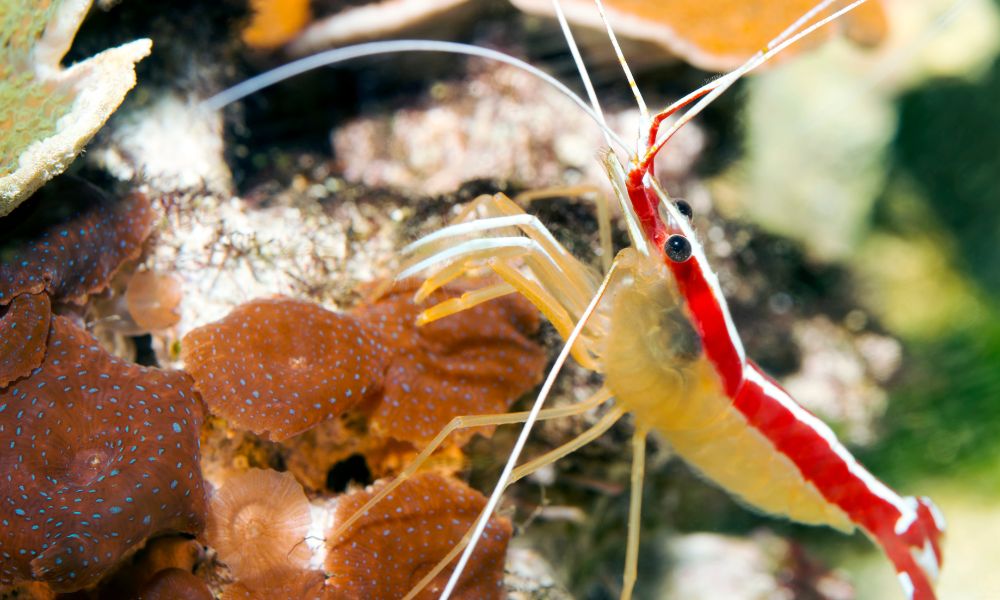
- Choose the Right Shrimp Species: Opt for larger, faster shrimp species that are less likely to be viewed as prey by angelfish. Species like Amano or Bamboo shrimp are often good choices.
- Provide Plenty of Hiding Places: Ensure your aquarium is well-planted and has plenty of decorations or caves. These provide hiding spots for shrimp, making it harder for angelfish to catch them.
- Introduce Shrimp First: Adding shrimp to the aquarium before the angelfish can establish territories can reduce aggression from the fish.
- Maintain Adequate Feeding: Ensure your angelfish are well-fed with a varied diet. A well-fed angelfish is less likely to prey on shrimp.
- Monitor and Adjust: Keep a close eye on the interaction between your angelfish and shrimp. If you notice aggressive behavior, you may need to separate them or reconsider the tank’s inhabitants.
By implementing these strategies, you can significantly reduce the likelihood of angelfish preying on shrimp in your aquarium, fostering a more peaceful and sustainable aquatic environment.
Alternatives to Shrimp in Angelfish Tanks
If you’re hesitant about adding shrimp to your angelfish tank due to the risk of them being eaten, there are several other tank mates and food alternatives you can consider:
- Compatible Fish Species: Consider fish that are known to coexist well with angelfish, such as Corydoras catfish, certain types of tetras, and dwarf gouramis. These species generally don’t provoke the predatory instincts of angelfish.
- Snails: Snails can be a great alternative to shrimp. They are excellent at cleaning the tank and are less likely to be eaten by angelfish due to their protective shells.
- Vegetation and Algae: Introducing live plants and allowing natural algae growth can provide angelfish with additional grazing options, reducing their interest in shrimp.
- High-Quality Prepared Foods: Offering a variety of high-quality flakes, pellets, and frozen foods can keep angelfish well-fed and less likely to hunt for shrimp.
- Occasional Treats: Providing occasional treats like bloodworms or brine shrimp can satisfy the angelfish’s need for variety without risking live shrimp in the tank.
By considering these alternatives, you can create a dynamic and safe environment for your angelfish while avoiding the risks associated with introducing shrimp into their habitat.






